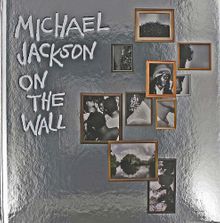| |||||||||||||||||||||||||
CURATOR INDEX
|
|
in stock $49.95 Free Shipping UPS GROUND IN THE CONTINENTAL U.S. |
 Creating Ourselves
Creating Ourselves
The Self in Art
Published by Whitechapel Gallery.
Edited by Emily Butler. Text by Glenn Adamson, Frances Borzello, Nicholas Cullinan, Amelia Jones.
Taking the display of the Collection at the Whitechapel Gallery as its springboard, this book looks generally at the question of the self in modern and contemporary art, and the ways in which artists are thinking about being and identity as an individual, in relation to others, to society and the wider world. Featuring over 100 works by a world-class roster of artists including Francis Al˙s, Fiona Banner, Phyllida Barlow, Lynda Benglis, Louise Bourgeois, Tracey Emin, Alex Katz, Sarah Lucas, Mike Nelson, Cindy Sherman, John Stezaker and Wolfgang Tillmans, the catalog also includes quotes by influential writers and theorists chosen by the artists, revealing how they have approached the question, “who or what exactly are we?”
PUBLISHER
Whitechapel Gallery
BOOK FORMAT
Flexi, 8.25 x 10.75 in. / 224 pgs / 120 color.
PUBLISHING STATUS
Pub Date 8/22/2017
Out of stock indefinitely
DISTRIBUTION
D.A.P. Exclusive
Catalog: FALL 2017 p. 162
PRODUCT DETAILS
ISBN 9780854882571 TRADE
List Price: $40.00 CAD $54.00
AVAILABILITY
Not available
STATUS: Out of stock indefinitely. |
 Francesco Vezzoli: TV 70
Francesco Vezzoli: TV 70
Guarda la Rai
Published by Fondazione Prada.
Edited by Chiara Costa, Mario Mainetti. Foreword by Miuccia Prada, Patrizio Bertelli, Monica Maggioni, Antonio Campo Dall'Orto. Text by Maria Pia Ammirati, et al.
TV 70 is a project by artist Francesco Vezzoli (born 1971) developed in collaboration with Rai, Italy’s national broadcasting company. With archival material and testimonials, it explores 1970s TV production.
PUBLISHER
Fondazione Prada
BOOK FORMAT
Slip, hbk, 5 x 7 in. / 764 pgs / 100 color / 10 bw.
PUBLISHING STATUS
Pub Date 6/27/2017
Active
DISTRIBUTION
D.A.P. Exclusive
Catalog: SPRING 2018 p. 192
PRODUCT DETAILS
ISBN 9788887029703 SDNR30
List Price: $75.00 CAD $99.00
AVAILABILITY
In stock
in stock $75.00 Free Shipping UPS GROUND IN THE CONTINENTAL U.S. |
 Luc Tuymans: Intolerance
Luc Tuymans: Intolerance
Published by Ludion.
Edited by Lynne Cooke, Tommy Simoens. Text by Nicholas Cullinan, Jan Avgikos, Jenevive Nykolak, Nicholas Serota, Donna Wingate.
PUBLISHER
Ludion
BOOK FORMAT
Hardcover, 9.5 x 11.5 in. / 464 pgs / 300 color.
PUBLISHING STATUS
Pub Date 1/26/2016
Out of stock indefinitely
DISTRIBUTION
D.A.P. Exclusive
Catalog: SPRING 2016 p. 121
PRODUCT DETAILS
ISBN 9789491819353 TRADE
List Price: $85.00 CAD $112.50
AVAILABILITY
Not available
STATUS: Out of stock indefinitely. |
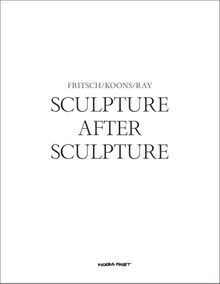 Sculpture After Sculpture: Fritsch, Koons, Ray
Sculpture After Sculpture: Fritsch, Koons, Ray
Published by Hatje Cantz.
Text by Jack Bankowsky, Thomas E. Crow, Nicholas Cullinan. Conversation with Michael Fried, et al.
PUBLISHER
Hatje Cantz
BOOK FORMAT
Hardcover, 8.5 x 11 in. / 140 pgs / 83 color.
PUBLISHING STATUS
Pub Date 5/26/2015
Out of stock indefinitely
DISTRIBUTION
D.A.P. Exclusive
Catalog: SPRING 2015 p. 194
PRODUCT DETAILS
ISBN 9783775738859 FLAT40
List Price: $60.00 CAD $79.00
AVAILABILITY
Not available
STATUS: Out of stock indefinitely. |
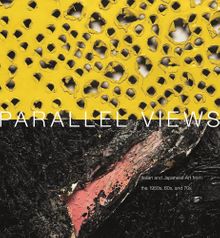 Parallel Views: Italian and Japanese Art from the 1950s, 60s and 70s
Parallel Views: Italian and Japanese Art from the 1950s, 60s and 70s
Published by Damiani.
Edited with introduction by Allan Schwarzman. Text by Joshua Mack, Carolyn Christov-Bakargiev, Nicholas Cullinan, Ming Tiampo.
PUBLISHER
Damiani
BOOK FORMAT
Clth, 11 x 12 in. / 408 pgs / 240 color.
PUBLISHING STATUS
Pub Date 3/24/2015
Out of stock indefinitely
DISTRIBUTION
D.A.P. Exclusive
Catalog: SPRING 2015 p. 151
PRODUCT DETAILS
ISBN 9788862084000 TRADE
List Price: $75.00 CAD $99.00
AVAILABILITY
Not available
STATUS: Out of stock indefinitely. |
 Henri Matisse: The Cut-Outs
Henri Matisse: The Cut-Outs
Published by The Museum of Modern Art, New York.
Edited by Karl Buchberg, Nicholas Cullinan, Jodi Hauptman. Contributions by Samantha Friedman, Flavia Frigeri, Markus Gross, Stephan Lohrengel.
One of modern art’s towering figures, Henri Matisse (1869–1954) was a painter, draftsman, sculptor and printmaker before turning to paper cut-outs in the 1940s. From the clashing hues of his Fauvist works made in the South of France in 1904–05, to the harmonies of his Nice interiors from the 1920s, to this brilliant final chapter, Matisse followed a career-long path that he described as "construction by means of color."
Karl Buchberg is Senior Conservator at The Museum of Modern Art.
Nicholas Cullinan is Director of the National Portrait Gallery in London.
Jodi Hauptman is a Senior Curator at The Museum of Modern Art.
Samantha Friedman is an assistant curator of the Department of Drawings and Prints at The Museum of Modern Art.
Flavia Frigeri is an assistant curator at Tate Modern in London; she is the organizing curator for Tate’s Young Patrons.
Nicholas Serota is director of Tate Modern's art museums and galleries.
PUBLISHER
The Museum of Modern Art, New York
BOOK FORMAT
Hardcover, 9 x 10.5 in. / 302 pgs / 250 color.
PUBLISHING STATUS
Pub Date 5/31/2014
Active
DISTRIBUTION
D.A.P. Exclusive
Catalog: SPRING 2014 p. 20
PRODUCT DETAILS
ISBN 9780870709159 TRADE
List Price: $65.00 CAD $95.00
AVAILABILITY
In stock
in stock $65.00 Free Shipping UPS GROUND IN THE CONTINENTAL U.S. |
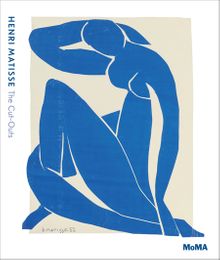 Henri Matisse: The Cut-Outs
Henri Matisse: The Cut-Outs
Published by The Museum of Modern Art, New York.
Edited by Karl Buchberg, Nicholas Cullinan, Jodi Hauptman. Text by Samantha Friedman, Flavia Frigeri, Markus Gross, Stephan Lohrengel, Nicholas Serota.
One of modern art's towering figures, Henri Matisse (1869-1954) was a painter, draftsman, sculptor and printmaker before turning to paper cut-outs in the 1940s. From the clashing hues of his Fauvist works, made in the South of France in 1904-5, to the harmonies of his Nice interiors from the 1920s to this brilliant final chapter, Matisse's career followed a path that he described as "construction by means of color."
Jodi Hauptman is a Curator in the Department of Drawings & Prints at The Museum of Modern Art, New York.
Karl Buchberg is a Senior Conservator at The Museum of Modern Art, New York.
Samantha Friedman is an Assistant Curator in the Department of Drawings & Prints at MoMA.
Nicholas Cullinan is the Curator of Modern and Contemporary Art at the Metropolitan Museum of Art.
PUBLISHER
The Museum of Modern Art, New York
BOOK FORMAT
Paperback, 9 x 10.5 in. / 300 pgs / 314 color.
PUBLISHING STATUS
Pub Date 10/31/2014
Out of stock indefinitely
DISTRIBUTION
D.A.P. Exclusive
Catalog: FALL 2014 p. 84
PRODUCT DETAILS
ISBN 9780870709487 TRADE
List Price: $45.00 CAD $60.00
AVAILABILITY
Not available
STATUS: Out of stock indefinitely. |
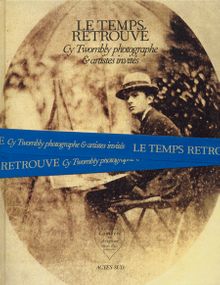 Cy Twombly Photographer, Friends and Others: Le Temps Retrouvé
Cy Twombly Photographer, Friends and Others: Le Temps Retrouvé
Published by Actes Sud.
Introduction by Éric Mézil. Text by Nicholas Cullinan, Don DeLillo and Anne-Marie Garat, Éric Mézil.
PUBLISHER
Actes Sud
BOOK FORMAT
Hardcover, 2 vols. 8.75 x 11 in. / 284 pgs / 230 color.
PUBLISHING STATUS
Pub Date 4/30/2012
Active
DISTRIBUTION
D.A.P. Exclusive
Catalog: SPRING 2012 p. 74
PRODUCT DETAILS
ISBN 9782742797417 TRADE
List Price: $80.00 CAD $107.50 GBP £70.00
AVAILABILITY
Out of stock
STATUS: Out of stock Temporarily out of stock pending additional inventory. |
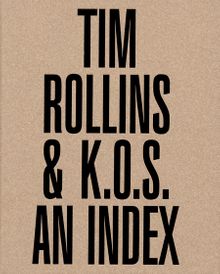 Tim Rollins & K.O.S.: An Index
Tim Rollins & K.O.S.: An Index
Published by JRP|Ringier.
Edited by Alessandro Rabottini. Text by Nicholas Cullinan, Nikola Dietrich, Suzanne Hudson, Alessandro Rabottini, Andrea Viliani.
PUBLISHER
JRP|Ringier
BOOK FORMAT
Hardcover, 6.75 x 9.25 in. / 224 pgs / 150 color.
PUBLISHING STATUS
Pub Date 8/31/2012
Out of print
DISTRIBUTION
D.A.P. Exclusive
Catalog: SPRING 2012 p. 99
PRODUCT DETAILS
ISBN 9783037642412 TRADE
List Price: $47.50 CAD $65.00
AVAILABILITY
Not available
STATUS: Out of print | 00/00/00 For assistance locating a copy, please see our list of recommended out of print specialists |
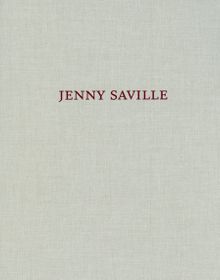 Jenny Saville
Jenny Saville
Published by Norton Museum of Art.
Text by Cheryl Brutvan, Nicholas Cullinan.
PUBLISHER
Norton Museum of Art
BOOK FORMAT
Clth, 8 x 10 in. / 100 pgs / 27 color.
PUBLISHING STATUS
Pub Date 8/31/2012
Out of print
DISTRIBUTION
D.A.P. Exclusive
Catalog: FALL 2012 p. 106
PRODUCT DETAILS
ISBN 9780943411422 TRADE
List Price: $50.00 CAD $60.00
AVAILABILITY
Not available
STATUS: Out of print | 00/00/00 For assistance locating a copy, please see our list of recommended out of print specialists |
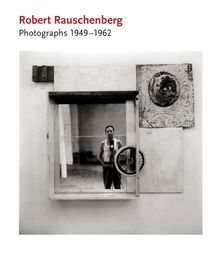 Robert Rauschenberg: Photographs
Robert Rauschenberg: Photographs
1949-1962
Published by D.A.P./Schirmer/Mosel.
Edited by David White, Susan Davidson. Text by Nicholas Cullinan.
Painter, sculptor, printmaker and photographer Robert Rauschenberg (1925-2008) provided a crucial bridge between Abstract Expressionism and Pop art. After studying at Black Mountain College under Josef Albers, Rauschenberg moved to New York where he formed close allegiances with Jasper Johns and Cy Twombly, began his groundbreaking Combines, collaborated with the Merce Cunningham Dance Company and co-launched the non-profit Experiments in Art and Technology. Considered one of the most innovative artists of his era, he died in 2008.
PUBLISHER
D.A.P./Schirmer/Mosel
BOOK FORMAT
Hardcover, 9.5 x 11 in. / 232 pgs / 136 duotone / 31 color.
PUBLISHING STATUS
Pub Date 9/30/2011
Out of print
DISTRIBUTION
D.A.P. Exclusive
Catalog: SPRING 2011 p. 177
PRODUCT DETAILS
ISBN 9781935202523 TRADE
List Price: $40.00 CAD $50.00
AVAILABILITY
Not available
STATUS: Out of print | 00/00/00 For assistance locating a copy, please see our list of recommended out of print specialists |
 Francesco Vezzoli: Greed
Francesco Vezzoli: Greed
Published by Walther König, Köln.
Edited by Cristiana Perrella. Text by Cristiana Perrella, Nicholas Cullinhan, Neville Wakefield, Bruce Hainley.
PUBLISHER
Walther König, Köln
BOOK FORMAT
Hardcover, 8 x 11 in. / 96 pgs / 61 color.
PUBLISHING STATUS
Pub Date 12/31/2011
Out of stock indefinitely
DISTRIBUTION
D.A.P. Exclusive
Catalog: FALL 2011 p. 134
PRODUCT DETAILS
ISBN 9783865609496 TRADE
List Price: $39.95 CAD $53.95
AVAILABILITY
Not available
STATUS: Out of stock indefinitely. |
 Cy Twombly: Cycles and Seasons
Cy Twombly: Cycles and Seasons
Published by Tate/D.A.P..
Text by Nicholas Serota, Richard Shiff, Nicolas Cullinan, Tacita Dean.
Cy Twombly is a leading figure in a heterogeneous generation of American artists that also includes Andy Warhol, Robert Rauschenberg and Jasper Johns. Unlike these others, he left America early in his career to live and work in Italy, where he has drawn inspiration from European literature, classical culture and the Italian landscape.
PUBLISHER
Tate/D.A.P.
BOOK FORMAT
Hardback, 9.75 x 11.5 in. / 256 pgs / 4 gatefolds / 154 color / 20 bw.
PUBLISHING STATUS
Pub Date 9/1/2008
Out of print
DISTRIBUTION
D.A.P. Exclusive
Catalog: FALL 2008 p. 168
PRODUCT DETAILS
ISBN 9781933045887 TRADE
List Price: $55.00 CAD $65.00
AVAILABILITY
Not available
STATUS: Out of print | 00/00/00 For assistance locating a copy, please see our list of recommended out of print specialists |
